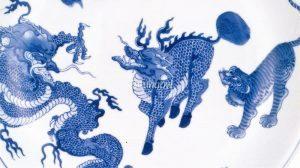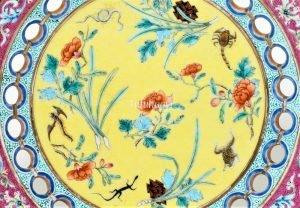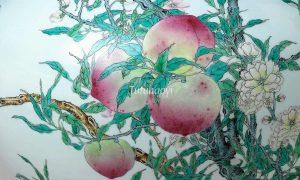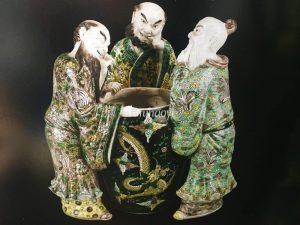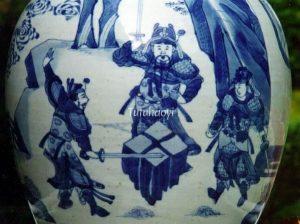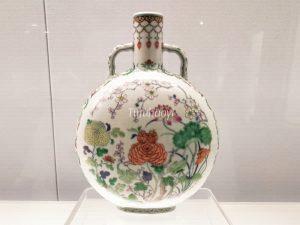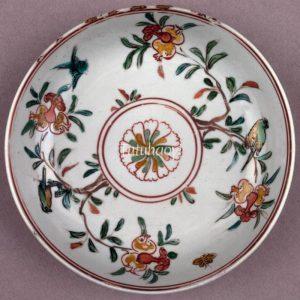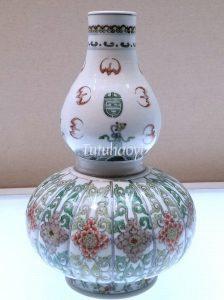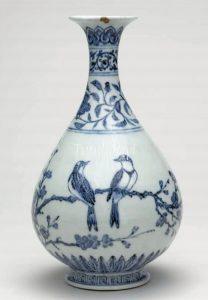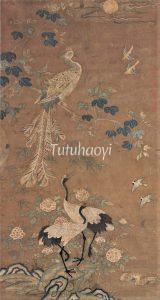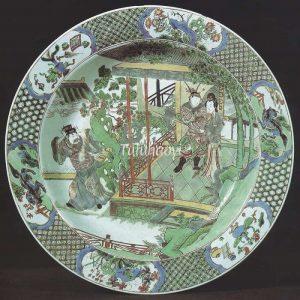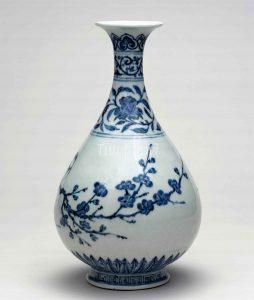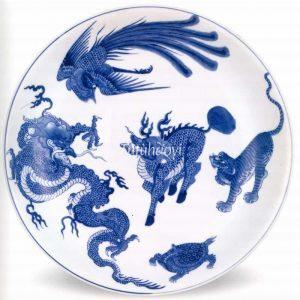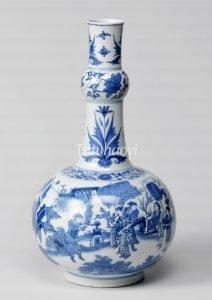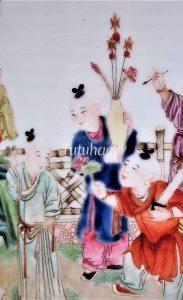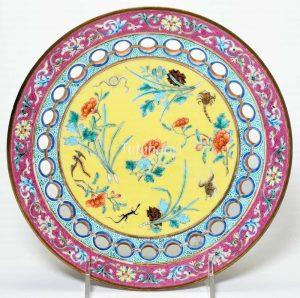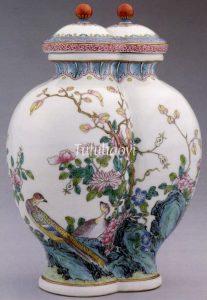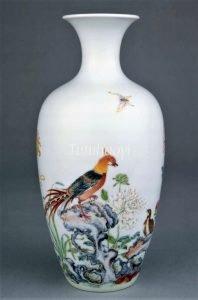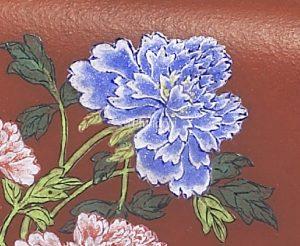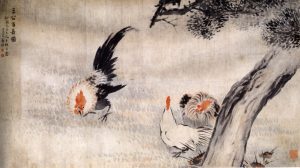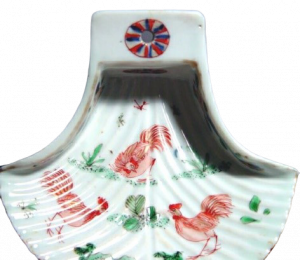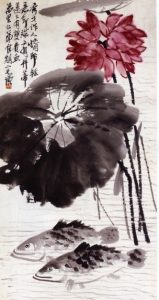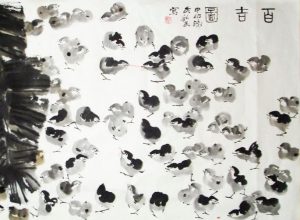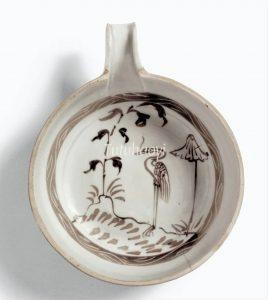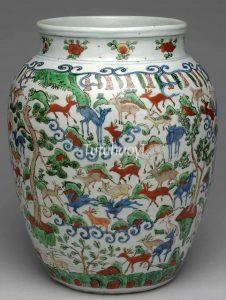Showing Results Containing
Have you ever wondered why the image of the prunus has been a popular motif in Chinese decorative art? Why do Chinese literati love to write poems about plum blossoms and paint them in their art works? Dr Yibin Ni will explain to you the symbolic ...
Dragon and phoenix are commonly seen motifs in Chinese visual culture. Tiger, qilin and tortoise, at the same time, are favoured creatures symbolic for auspice. But when the motifs of the above five beasts are combined together, they have more mea...
On Duanwu Festival, Chinese people have a variety of practices, such as drinking rice wine sprayed with realgar powder and hanging images of the Heavenly Master on the lintel. Where did this tradition come from and how were these practices depicte...
In Chinese culture and pictorial art, the peach fruit is often used to wish for long life on birthday parties. How does this fruit become associated with the idea of longevity? Here is Dr Yibin Ni explaining to us the origin of legendary stories r...
There have been a few interesting discussions even guesses on a mysterious scene which depicts mainly three figures surrounding a large bowl. The story scene actually comes from an important anecdote in Song dynasty in China. Let Dr Yibin Ni expla...
Do you wonder why two warriors are waving swords over a rock that looks like a cross bun? Let Dr Yibin Ni demystify this enigmatic scene for you, which illustrates the old Chinese saying ‘bedfellows dream different dreams’!
It is widely thought that the two-horned peony is a characteristic and unique feature only existed in Kangxi period. But Dr Yibin Ni has proved otherwise here with a number of examples from other reigns on Chinese antiques.
Pun Design :
Pomegranate
Punning Details:
– Artist may repeat one particular visual element many times for conveying the numeral ‘bai 百 hundred’.
– A cracked pomegranate showing numerous seeds (bai zi<...
Pun Design :
Five + Boy + Fighting over + Helmet
Punning Details:
– The action of five (more or fewer) boys fighting over something refers to ‘夺 duo’. ‘Five’ is a function word.
– ‘kui 盔 helmet’, ...
Pun Design:
Chinese bulbul + Two
Punning Details:
A pair of Chinese bulbuls in image imply the couple or the marriage;
‘bai tou 白头 white-headed’, of ‘bai tou weng 白头翁 Chinese bulbul’ (the white-headed-old-chap bird) can imply a ripe old age.<...
Image of the Five Principal Human Relations (Wu Lun Tu 五伦图), also known as Lun Xu Tu 伦叙图 (Epitome of Hierarchical Social Order), symbolises the five basic relationships in traditional Chinese society.
This design typically consists of five kinds of birds, the Continue Reading
Dong Zhuo (董卓 d. 192), a tyrannic warlord rising to power at the end of the Han dynasty, caused great concern among courtiers and officials. Wang Yun (王允), the Minister Over the Masses (司徒 Situ), was entrusted to figure out a plan to bring him down. Dong Zhuo was particularly powerful because he managed to ally ...
The tree commonly referred to in English as the flowering plum in fact belongs to the species Prunus mume, which is part of the apricot family.
With the pine and ba...
Yang Shen (杨慎, 1488–1559), alias Sheng’an (升庵), is a literatus and poet in the Ming dynasty (1368–1644). He recorded in Volume Ninety-Four of Sheng’an Additional Works a folklore anecdote: ‘In the northern dialect, there is no difference in sound between the he 合 for “coming together” and the he 鹤 for “...
The main figure in the scene is a dignitary, often gripping a hu (笏) tablet in his hands, which an official uses to take notes when he has audience with the emperor in court. He is usually sheltered by page boys erecting some fans or a parasol or guarded by a soldier holding a weapon with an iron melon on the to...
A variation of 平升三级 ping sheng san ji (May you have three successive promotions unexpectedly) is 连升三级 lian shen...
In traditional Chinese customs, the fifth day of the fifth month of the lunisolar calendar is regarded as one of the most dangerous days of the year when evil spirits and hazardous creatures lurked around. Notably, five noxious creatures were identified, known as ‘Continue Reading
Summer solstice, the longest day in the year, occurs in the fifth month of the Chinese calendar and Chinese astronomy believes that it stands for the apogee of the yang force in the annual cycle. Ancient philosophers warned in Classic of Changes (易经 Yi Jing) that ‘When the sun has reached the meridian h...
Either the clockwise swastika 卐 or the counterclockwise sauwastika 卍 is used interchangeably in Chinese decorative arts as well as in some religious contexts. Sometimes, the two opposite versions can co-occur on the same occasion without making a difference in meaning. Swastika is a very old symbol in the cultures scatte...
The Chinese deeply respect the elderly and consider a long existence – ideally accompanied by health and happiness – to be one of the five most important blessings (wufu 五福) in a person’s life, which were believed by the ancients and recorded in the Book of Documents 书经 in the Zhou Dynasty (...
According to the Account of Wu (吴志) in The Records of the Three Kingdoms (三国志), Lu Ji (陆绩), was a native of Wu. At the age of six, he had an opportunity to meet Yuan Shu (袁术), who at the time controlled the region of Jiujiang. Yuan Shu put out some tangerines for him to eat. Lu Ji surreptitiously stuffed three of them in...
Pun Design: Long-tailed Pheasant + Continue Reading
Pun Design: Quail + Long-tailed Continue Reading
Pun Design: Two + Quails
Punning Details: The word ‘an 鹌’ in ‘an chun 鹌鹑’ for ‘quail’ makes a pun on ‘
Common sources such as Baidu refer to the motif of a peony flower head with two distinctive ‘horns’ as a characteristic feature unique to Chinese porcelain of the Kangxi ...
‘San gong 三公’ are the ‘Three Top Lords in the Imperial Court’. The ‘gong 公’ from the Chinese name ‘gong ji 公鸡’ for ‘rooster’ puns on the Chinese name for ‘lord’ and three roosters in the picture represent the three top lords, which are the three top positions in the imperial court. The Chinese ...
‘San gong 三公’ are the ‘Three Top Lords in the Imperial Court’. The ‘gong 公’ from the Chinese name ‘gong ji 公鸡’ for ‘rooster’ puns on the Chinese name for ‘lord’ and three roosters in the picture represent the three top lords, which are the three top positions in the imperial court.
...
‘Bing di 并蒂’ from ‘bing di lian 并蒂莲’ (twin-headed lotus flower) contributes to the meaning of ‘a loving relationship’. ‘Gui 鳜’ from ‘gui yu 鳜鱼’...
‘Ji 鸡’ is a generic name for cockerel, hen, and chick, and sounds the same as ‘ji 吉’ for ‘good fortune’. Thus, a picture of many chickens is used to represent ‘abundant good fortune’.
Related Pun Pictures:
An egret and lotus flowers (莲花) are pictured in combination to infer ‘Yi Lu Qing Lian’, which means ‘You are an honest and uncorrupted official in your ...
Just like the English word ‘bat’ can mean ‘a kind of animal’ in one context and ‘a club for playing tennis’ in another, so can pictures of animals and flowers in a pictorial design called ‘pun rebus’ in Chinese art. For example, the Chinese name for Continue Reading

